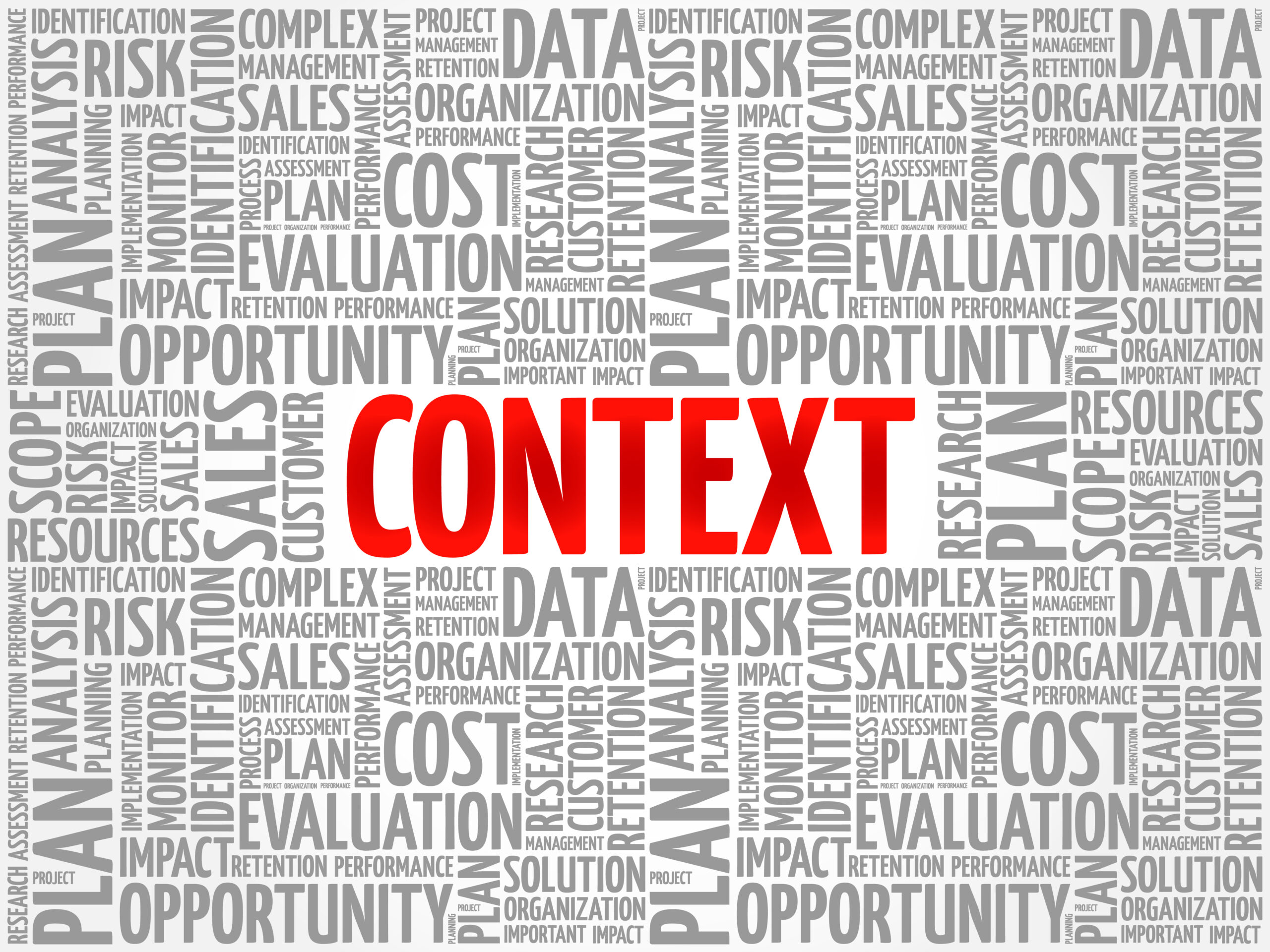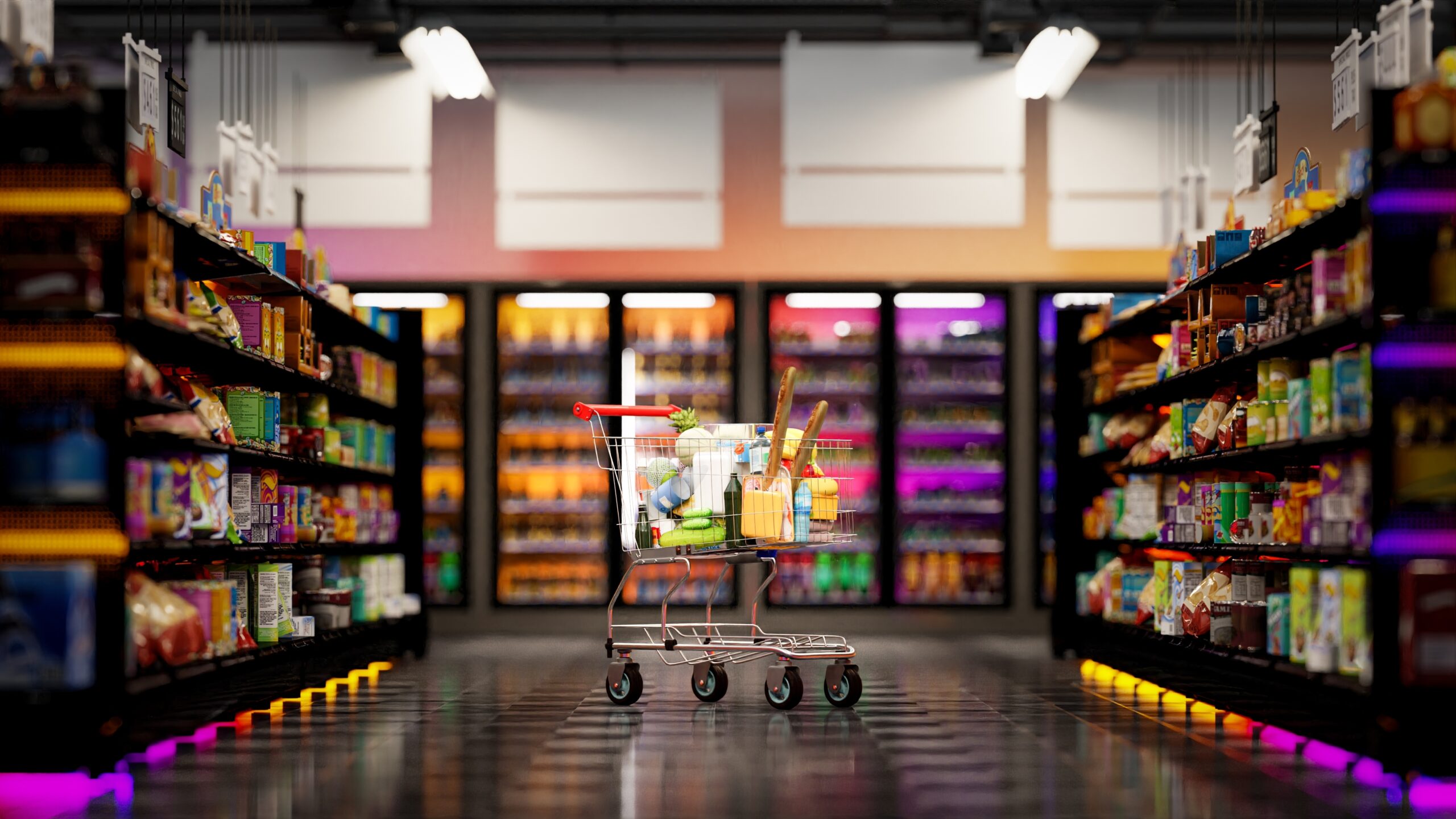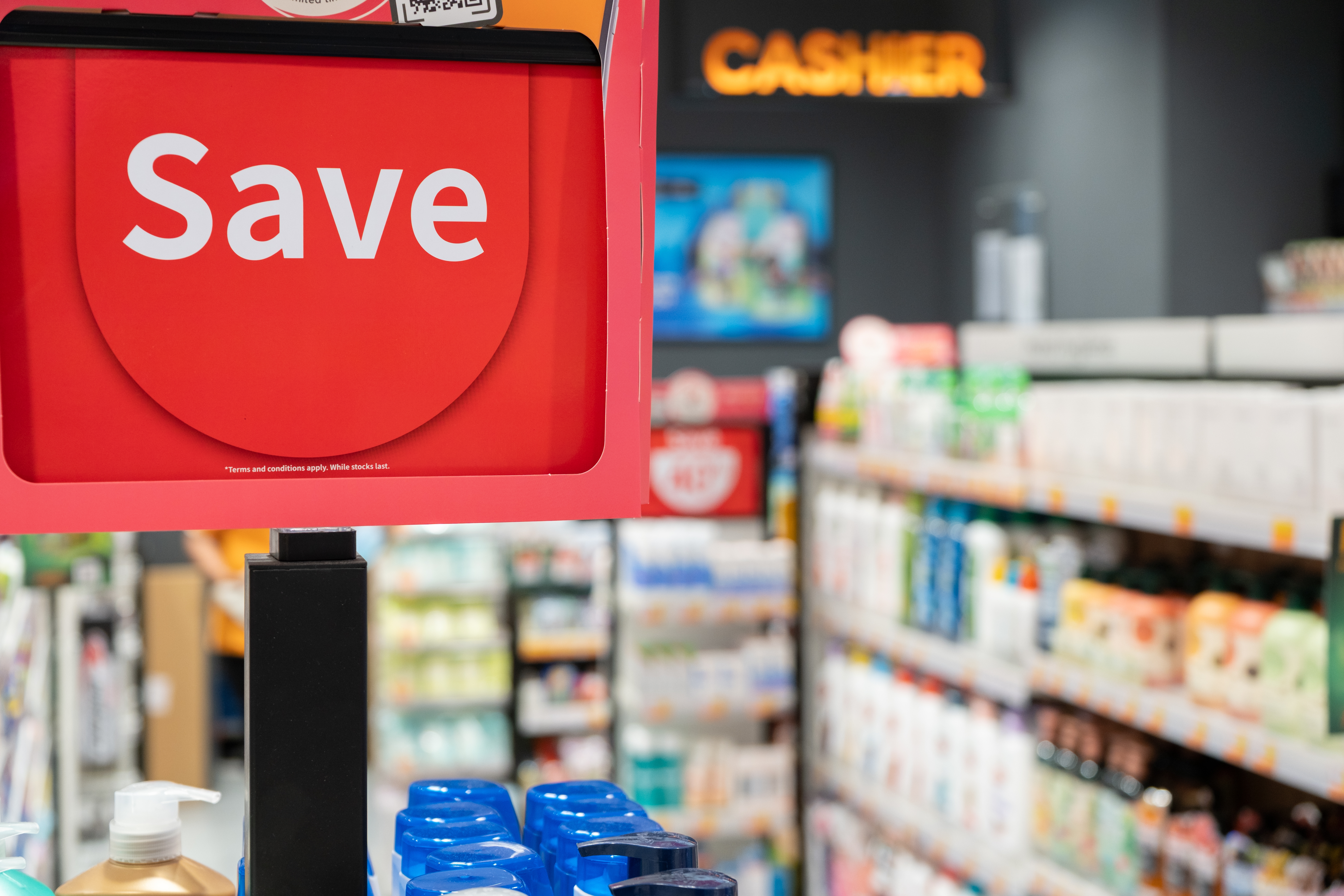In retail merchandising, every decision, from product placement to promotional strategies, can make or break the customer experience. However, what many overlook is that these decisions cannot be made in a vacuum. Merchandising strategies will fail to resonate with customers and to drive sales if they do not take into account the unique context of a store. At InContext, we understand the importance of this. It’s in our name. We’re experts in helping you see the whole picture, giving you the tools and insights to ensure your strategies are tailored to real-world environments. When you have the right context, you make better decisions—every time.
What Do We Mean by Context in Retail Merchandising?
When talking about context in retail merchandising, we’re referring to the crucial factors that influence every decision you make about your store—factors beyond simply stocking shelves and setting prices. A deep understanding of the store’s layout, its customer base, regional preferences, and the competitive landscape must inform merchandising decisions. Without considering these variables, you risk missing opportunities to engage shoppers effectively and optimize sales. Here are some of the most important types of context to consider when planning your merchandising strategy.
Store Layout
The physical layout of a store directly impacts how customers navigate the space and interact with products. A well-optimized layout enhances visibility for key products and creates a smooth flow through aisles, encouraging customers to spend more time in the store. By strategically placing high-demand items in easy-to-reach locations or positioning impulse buys near checkout areas, for example, businesses can increase the likelihood of purchase while improving the overall shopping experience.
Target Demographics
Each store’s customer base varies by age, gender, income level, and lifestyle, and these factors shape their shopping habits. Merchandising decisions must be aligned with the preferences of the target demographic. Younger consumers may prefer trendy, fast-moving items displayed prominently, while older shoppers may prioritize clearer signage and accessibility. Understanding these differences helps in tailoring store offerings to drive more relevant and targeted sales.
Regional Preferences
Consumer habits and product preferences vary widely by region. Factors such as local trends, weather, and cultural practices influence buying behavior, which means what sells in one area may not perform well in another. Retailers understanding regional preferences can stock the right products at the right time, ensuring they cater to local demand, such as beachwear in coastal areas and cold-weather gear in colder climates.
Competitive Landscape
Retailers must remain aware of their competitors’ activities, including pricing, promotions, and product placements. By understanding competitors’ strategies, retailers can position themselves more effectively, offering unique products or pricing advantages that set them apart. Monitoring competitor behavior helps retailers stay agile, enabling them to respond to market changes and maintain their competitive edge.
Customer Journey
A customer’s path through the store plays a huge role in driving sales. Retailers must understand how shoppers move through their space and where key touch points exist. Effective merchandising places high-margin items or promotional products in locations where customers are likely to linger. Understanding these patterns helps retailers create a more engaging and productive shopping experience, encouraging impulse purchases and repeat visits.
Shelf Space Availability
With limited display space, making the most of every inch is critical. Retailers must prioritize which products deserve prime real estate based on profitability and customer demand. Maximizing shelf space for top-performing or high-margin products can drive better sales per square foot, while ensuring enough space for new or trending items keeps the inventory fresh and appealing.
Stock Levels and Replenishment Cycles
Knowing how quickly products move and when they need to be replenished is key to maintaining optimal inventory levels that ensure popular items are always available while minimizing the cost and inefficiency of holding excess stock. Efficient replenishment keeps shelves full and customers happy without wasting valuable storage space.
Pricing Strategy
Understanding not only how your pricing compares with that of your competitors but also how it aligns with customer expectations allows you to make strategic adjustments. Whether through dynamic pricing, discounts, or everyday low prices, ensuring that your pricing reflects market conditions and customer willingness to pay is essential for driving conversions and maintaining profitability.
In-Store Promotions and Sales Events
Promotions and sales events attract attention, but they also require careful merchandising to be effective. By knowing when these events will occur, retailers can adjust their product placement, ensuring that promotional items are front and center. Aligning in-store displays with sales events maximizes exposure and encourages customers to take advantage of special offers, driving additional traffic and boosting sales during peak times.
Digital and Physical Integration
The rise of digital channels means many customers interact with a store online and offline. Retailers must consider how digital behaviors, such as online research and social media engagement, influence in-store shopping. Offering options such as click-and-collect or promoting online deals in-store as well creates a seamless shopping experience that combines the convenience of digital with the immediacy of physical retail.
Customer Feedback and Preferences
Listening to direct customer feedback about products, store layout, and service provides invaluable insights into what’s working and what needs improvement. Customer preferences should guide merchandising decisions, from which products to stock to how the store is organized. By responding to feedback, retailers can make certain they meet their customers’ actual needs, driving satisfaction and loyalty.
Store Location
The physical location of a store plays a huge role in determining the types of products that will perform best. Stores in urban areas often see different traffic patterns and product preferences than those in suburban or rural locations. Understanding the local community and tailoring your merchandising to suit nearby residents’ preferences allows retailers to create a shopping experience that resonates with their specific audience.
Why You Need Context to Make Decisions in Retail Merchandising
The reality is that retail is getting more competitive by the day. While the chaos of the pandemic is mostly a memory, it has left a lasting impact on the industry, permanently changing how consumers shop. The adaptations made during that time—such as the explosive rise of e-commerce and the emphasis on seamless online-to-offline shopping experiences—have raised customer expectations around product selection, convenience, and personalization. As a result, when shoppers do make the decision to visit a store, retailers need to get it right. There is less room for error, and any misstep in merchandising can lead to lost sales or frustrated customers who may not give you a second chance.
Today’s shoppers are more demanding, expecting to find the products they want quickly in a well-organized, easy-to-navigate environment. This means retailers and brands must go beyond traditional strategies and take into account various contextual factors to create an exceptional in-store experience. Understanding customer behavior, preferences, and trends is no longer optional; it’s a critical part of staying relevant and profitable in the modern retail landscape.
Each merchandising choice—product placement, pricing, inventory management—needs to be driven by data and a deep understanding of the environment you’re operating in. Without context, you risk confusing your customers with poorly organized store layouts, misplaced products, and irrelevant offerings. When the customer experience is compromised, shoppers are less likely to make a purchase and even more unlikely to return. Optimizing the customer journey is essential in retail, and decisions based on context create a more intuitive shopping experience, leading to higher customer satisfaction and, ultimately, more sales.
Context also plays a pivotal role in maximizing sales potential and managing inventory effectively. Without knowledge of local buying trends, seasonality, or customer preferences, you might end up with shelves full of products that don’t sell, leaving you with wasted space and lost revenue. On the flip side, you may miss out on stocking high-demand items, frustrating customers, and driving them to your competitors. Effective inventory management relies on context, allowing you to maintain the right balance between demand and stock levels so that you’re neither overstocked nor understocked.
Finally, merchandising decisions that ignore context put your business at risk in a highly competitive market. Retail is fast-paced, and trends change in an instant. Without the ability to respond quickly to new trends, shifts in customer behavior, and competitor actions, you’re left vulnerable. By factoring in context, you’re better equipped to adapt and stay relevant, reducing the chances of poor decision-making and enabling you to seize opportunities as they arise. There’s little room for error in retail, and making the right decisions the first time is critical to staying ahead of the competition.
InContext: The Insights You Need in the Context You Need Them
At InContext, we understand that context in retail isn’t just a buzzword; it’s vital to making smart, impactful decisions. But how do we reliably gather and apply the context needed to succeed in such a competitive environment? The answer is data. We leverage advanced technologies and systems that analyze real-world scenarios, providing you with the context necessary to make informed decisions the first time around.
Need to understand how store layout will affect customer purchasing? ShopperMX, our digital twin platform that lets you simulate and test merchandising strategies in a virtual replica of your store, can help. And by connecting shopper attitudes with their actual behaviors through virtual store research, we provide insights that help you make informed, data-driven decisions. This powerful approach ensures you can visualize and optimize your store layout before making costly physical changes, all within the context of a real-world shopping experience, so you’re always aligned with how customers will actually interact with your space.
How about everything you need to know to get to market? When it’s time to launch, SMX GO delivers a clear vision that helps everyone in your ecosystem understand the in-store plan. With augmented reality, live streaming, 3D videos, and other tools, SMX GO simplifies communication and enhances engagement. Your field representatives will be fully equipped, buyers more engaged, and any barriers to compliance minimized, so you can confidently execute your strategy and get to market faster with a cohesive plan everyone can follow.
Or how about knowing what you need to predict the success of your planogram? Oh, and did we mention faster than ever? InContext’s cutting-edge prediction model enables you to quickly forecast how your planogram will perform in stores. Continuously fed with real customer behavior data, the platform stays updated with the latest trends to give you the most accurate predictive analytics. Our platform’s Arrangement AI helps you fine-tune your strategy or validate your current plan so you can provide the best possible customer experience. Powered by more than 2 million shopping trips, this model helps you predict sales lift and optimize your planogram with confidence.
Get Started with InContext Today
In retail merchandising, context is everything. Success hinges on understanding how customers interact with your products in a real-world environment: how they move through your store, respond to your layout, and make purchasing decisions. Without this context, decisions are just educated guesses. InContext offers the tools and insights you need to eliminate uncertainty and bring clarity to your strategy. By leveraging our powerful virtual store platform and predictive analytics, you can optimize your merchandising efforts and confidently move forward with strategies that drive results. Partner with InContext to unlock the full potential of context-driven retail execution and elevate your in-store success.





